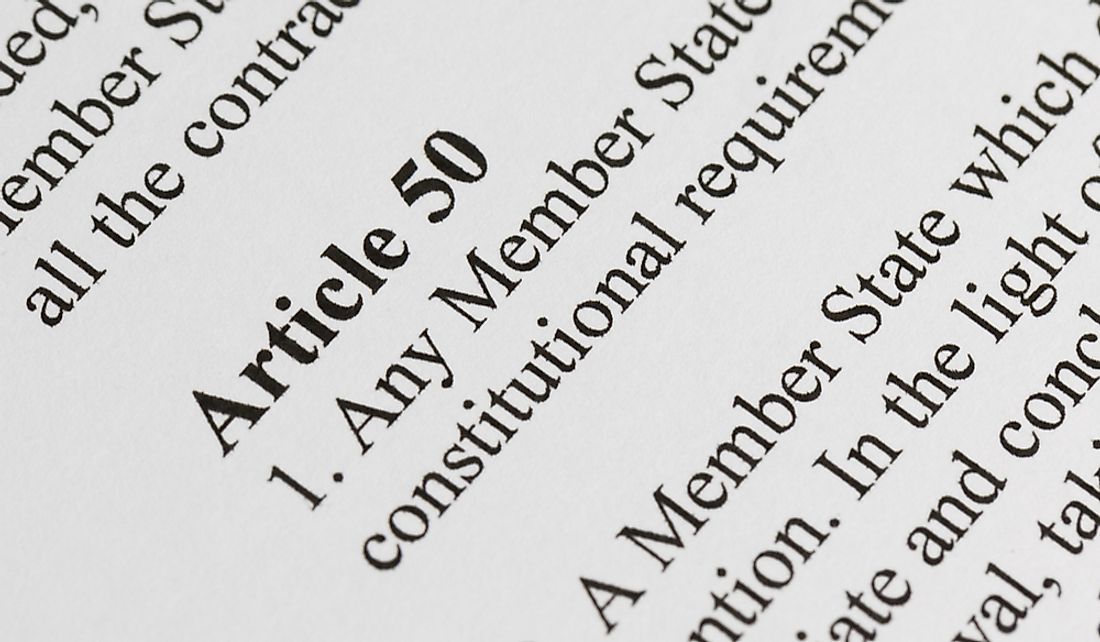What Is Article 50 of the European Union Treaty?

Following the vote on Brexit, there has been a growing debate on membership withdrawal from the European Union. The debate was even fueled further by the recent Commons defeat to Theresa May’s Brexit Withdrawal Agreement. Several questions have been raised as to whether Article 50 will be rescinded or extended to delay or even halt Brexit. In all these confusions and uncertainty, the one question people have been asking, especially those in Britain is “What is Article 50?” Well, this article focuses on how EU countries can withdraw from the Union and any impact of the withdrawal which Article 50 is all about.
The Withdrawal Clause
Any European Union member state is at liberty unilaterally and willfully withdraw or cease to be a Union member as long as it follows the laid down procedures. Article 50 provides a mechanism through which any of the Union member states can voluntarily withdraw its membership in line with its own terms. It also provides for the re-entry of any country that had withdrawn from the membership. Such a country is required to go through the accession procedure.
Background of the Clause
Article 50 was first drafted by John Olav Kerr, a former diplomat and Scottish cross-bencher peer. He was the general secretary of the Convention of the Future Europe which came up with the Constitutional Treaty of the EU. However, the ratification of the European Constitution failed, leading to the incorporation of the clause into the Treaty of Lisbon, which came into effect on December 1, 2009. Before this, the laws or treaties did not outline how the member states could voluntarily and unilaterally withdraw their Union membership, making it technically difficult for any member to withdraw. States could only base their withdrawal on their sovereignty and right not to have any international commitment.
Procedure for Withdrawal
Article 50 introduced the procedure for voluntary withdrawal from the Union. A member country that has decided to withdraw its membership from the Union must notify the Council of its plans to do so. The Council shall then provide guidelines for the conclusion of its terms with that country, set out the arrangement for the state’s withdrawal, and outline its future relations with EU. This agreement is concluded by the Council on behalf of the EU, acting by qualified majority and having obtained the European Parliament’s consent. The treaty on EU will no longer bind particular state that is withdrawing from the day of the withdrawal consensus or at the end of the second year from the date of notification of the withdrawal. Any Council member that represents the country that has the intention of withdrawing from the Union is not allowed to in Council discussions or decision making concerning it.
Revocation of the Withdrawal
Article 50 is silent on whether a member state can revoke their notification of the intention to withdraw. However, several EU experts and institutions are of the opinion that a country intending to leave can change its mind. Thus, notification can be revoked without permission from the EU members as long as the member state has not already left the Union.











